Health Care > EXAM > NUR 2115 Exam 2 / NUR 211 Exam 2 Fundamentals of Nursing; Questions & Answers: Latest Updated A+ Sc (All)
NUR 2115 Exam 2 / NUR 211 Exam 2 Fundamentals of Nursing; Questions & Answers: Latest Updated A+ Score Solution
Document Content and Description Below
1. The most appropriate nursing order for a patient who develops dyspnea and shortness of breath would be… a. Maintain the patient on strict bed rest at all times b. Maintain the patient in an or... thopneic position as needed c. Administer oxygen by Venturi mask at 24%, as needed d. Allow a 1 hour rest period between activities B. When a patient develops dyspnea and shortness of breath, the orthopneic position encourages maximum chest expansion and keeps the abdominal organs from pressing against the diaphragm, thus improving ventilation. Bed rest and oxygen by Venturi mask at 24% would improve oxygenation of the tissues and cells but must be ordered by a physician. Allowing for rest periods decreases the possibility of hypoxia. 2. The nurse observes that Mr. Adams begins to have increased difficulty breathing. She elevates the head of the bed to the high Fowler position, which decreases his respiratory distress. The nurse documents this breathing as: a. Tachypnea b. Eupnca c. Orthopnea d. Hyperventilation C . Orthopnea is difficulty of breathing except in the upright position. Tachypnea is rapid respiration characterized by quick, shallow breaths. Eupnea is normal respiration – quiet, rhythmic, and without effort. 3. The physician orders a platelet count to be performed on Mrs. Smith after breakfast. The nurse is responsible for: a. Instructing the patient about this diagnostic test b. Writing the order for this test c. Giving the patient breakfast d. All of the above C . A platelet count evaluates the number of platelets in the circulating blood volume. The nurse is responsible for giving the patient breakfast at the scheduled time. The physician is responsible for instructing the patient about the test and for writing the order for the test. 4. Mrs. Mitchell has been given a copy of her diet. The nurse discusses the foods allowed on a 500-mg low sodium diet. These include: a. A ham and Swiss cheese sandwich on whole wheat bread b. Mashed potatoes and broiled chicken c. A tossed salad with oil and vinegar and olives d. Chicken bouillon B. Mashed potatoes and broiled chicken are low in natural sodium chloride. Ham, olives, and chicken bouillon contain large amounts of sodium and are contraindicated on a low sodium diet. 5. The physician orders a maintenance dose of 5,000 units of subcutaneous heparin (an anticoagulant) daily. Nursing responsibilities for Mrs. Mitchell now include: a. Reviewing daily activated partial thromboplastin time (APTT) and prothrombin time. b. Reporting an APTT above 45 seconds to the physician c. Assessing the patient for signs and symptoms of frank and occult bleeding d. All of the above D . All of the identified nursing responsibilities are pertinent when a patient is receiving heparin. The normal activated partial thromboplastin time is 16 to 25 seconds and the normal prothrombin time is 12 to 15 seconds; these levels must remain within two to two and one half the normal levels. All patients receiving anticoagulant therapy must be observed for signs and symptoms of frank and occult bleeding (including hemorrhage, hypotension, tachycardia, tachypnea, restlessness, pallor, cold and clammy skin, thirst and confusion); blood pressure should be measured every 4 hours and the patient should be instructed to report promptly any bleeding that occurs with tooth brushing, bowel movements, urination or heavy prolonged menstruation. 6. The four main concepts common to nursing that appear in each of the current conceptual models are: a. Person, nursing, environment, medicine b. Person, health, nursing, support systems c. Person, health, psychology, nursing d. Person, environment, health, nursing D . The focus concepts that have been accepted by all theorists as the focus of nursing practice from the time of Florence Nightingale include the person receiving nursing care, his environment, his health on the health illness continuum, and the nursing actions necessary to meet his needs. 7. In Maslow’s hierarchy of physiologic needs, the human need of greatest priority is: a. Love b. Elimination c. Nutrition d. Oxygen D . Maslow, who defined a need as a satisfaction whose absence causes illness, considered oxygen to be the most important physiologic need; without it, human life could not exist. According to this theory, other physiologic needs (including food, water, elimination, shelter, rest and sleep, activity and temperature regulation) must be met before proceeding to the next hierarchical levels on psychosocial needs. [Show More]
Last updated: 1 year ago
Preview 1 out of 29 pages
Instant download
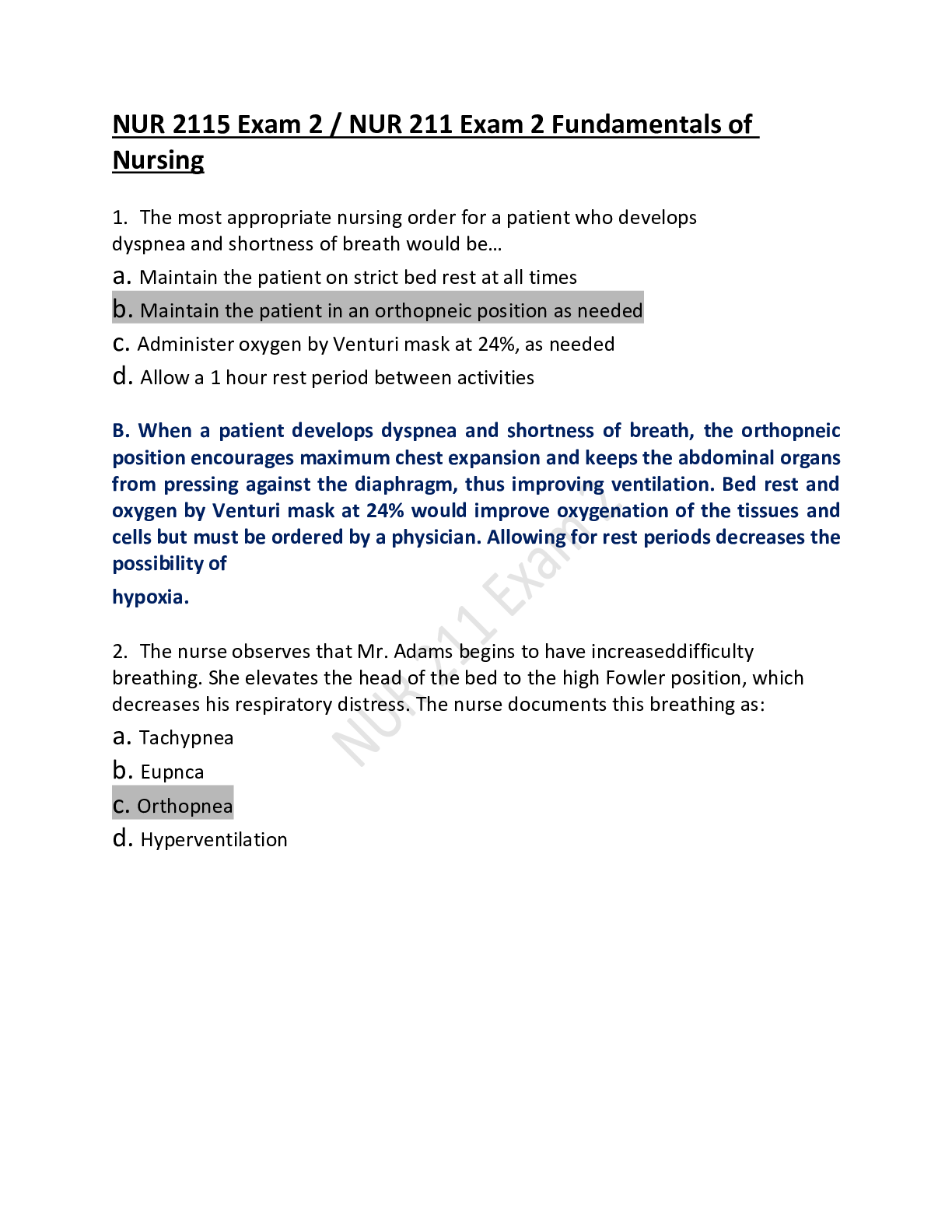
Buy this document to get the full access instantly
Instant Download Access after purchase
Add to cartInstant download
Reviews( 0 )
Document information
Connected school, study & course
About the document
Uploaded On
Jan 04, 2023
Number of pages
29
Written in
Additional information
This document has been written for:
Uploaded
Jan 04, 2023
Downloads
0
Views
41




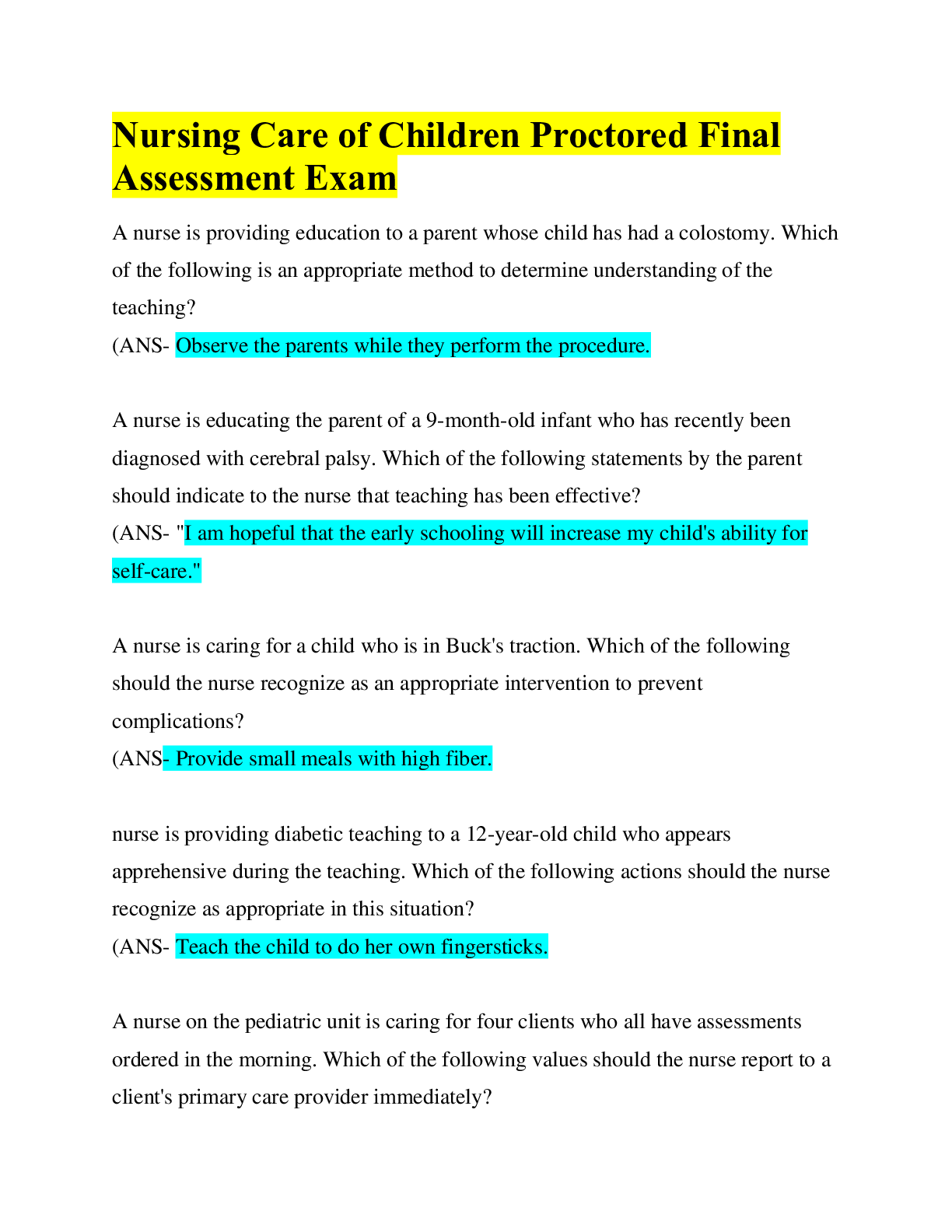
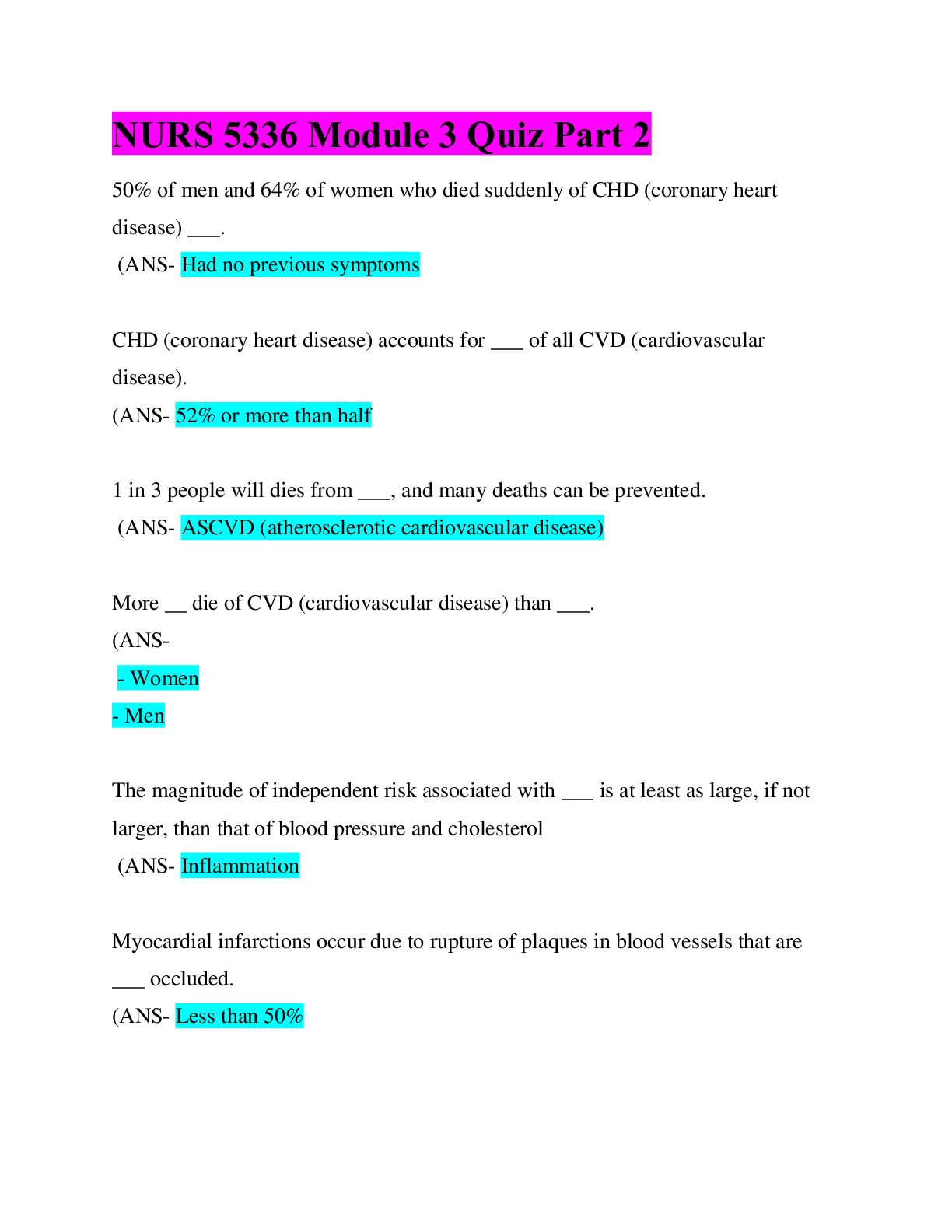
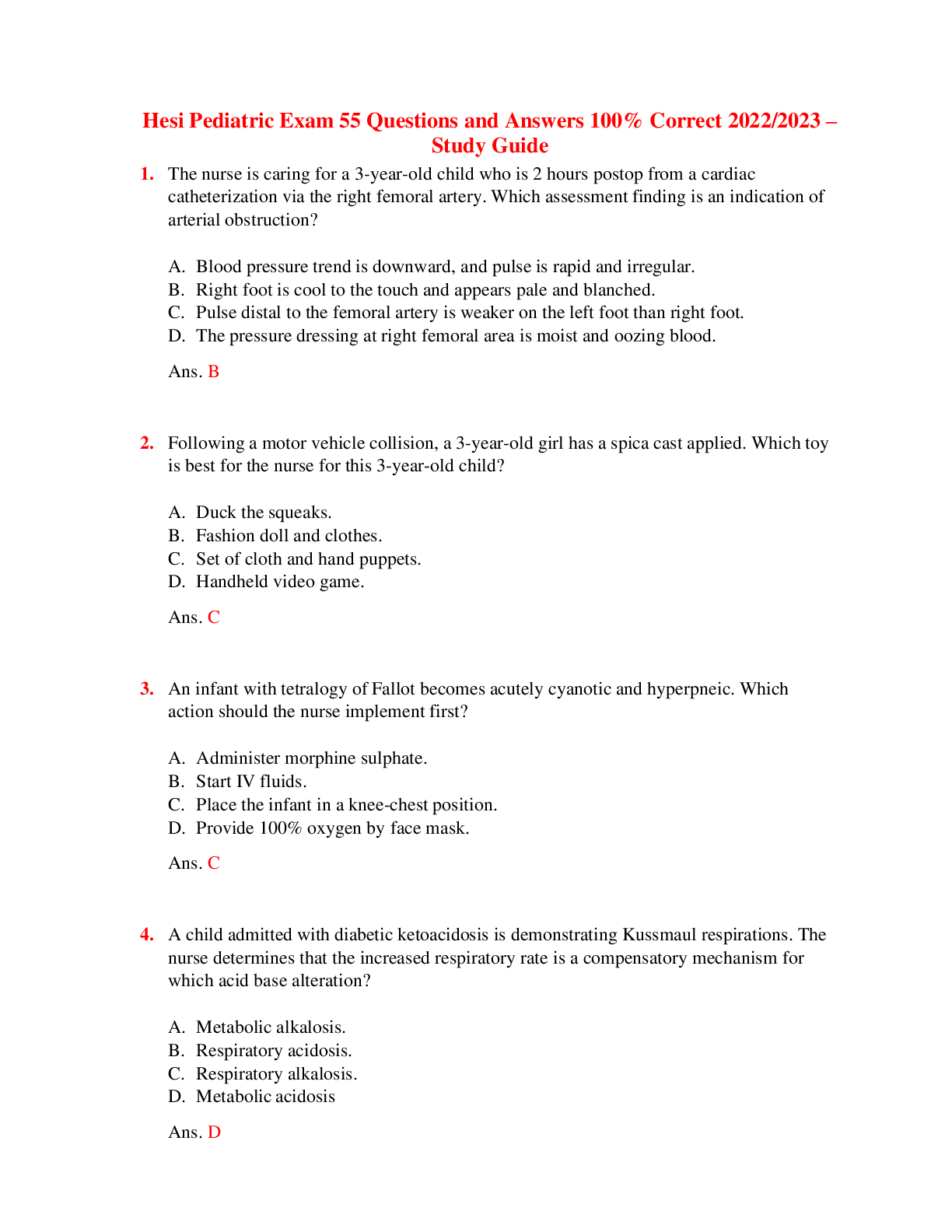

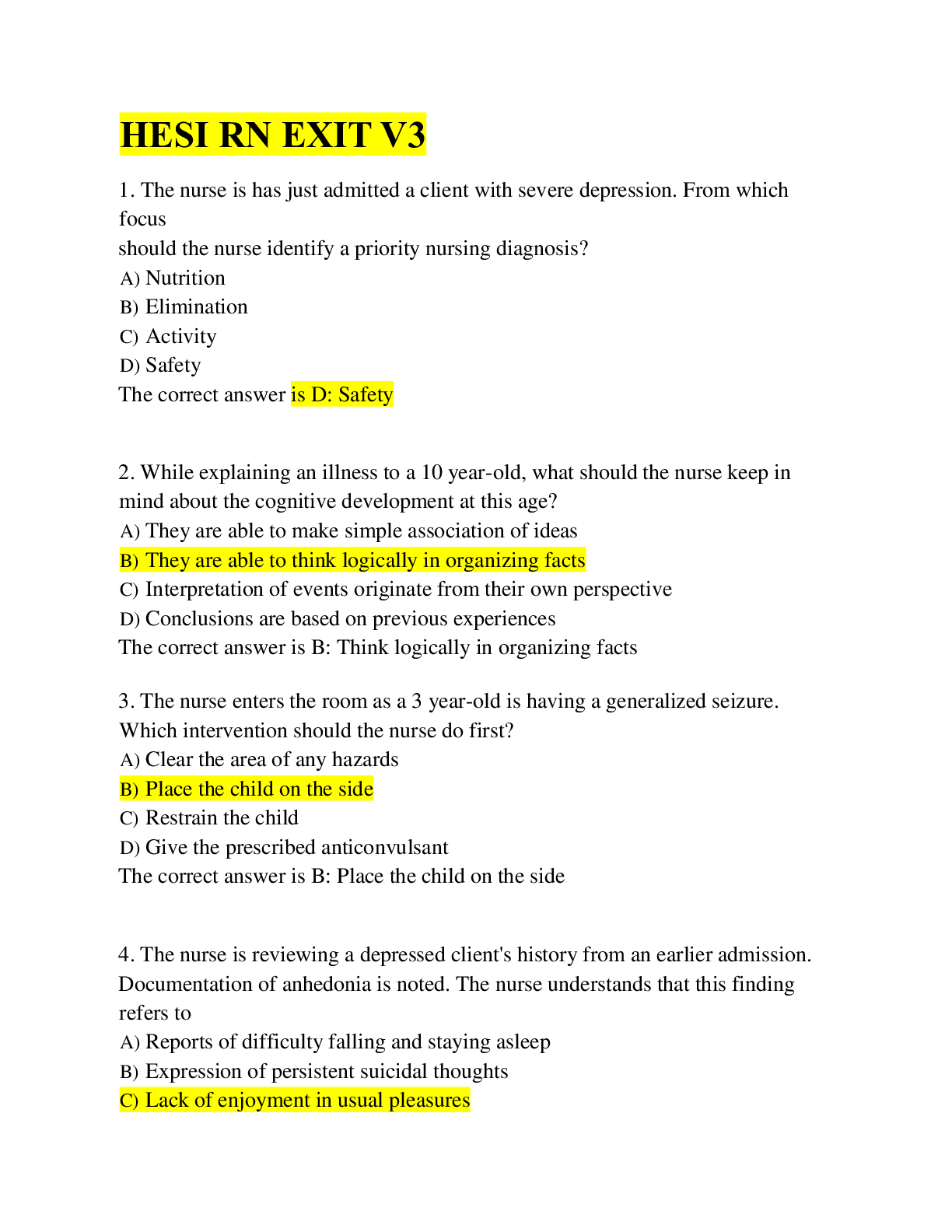
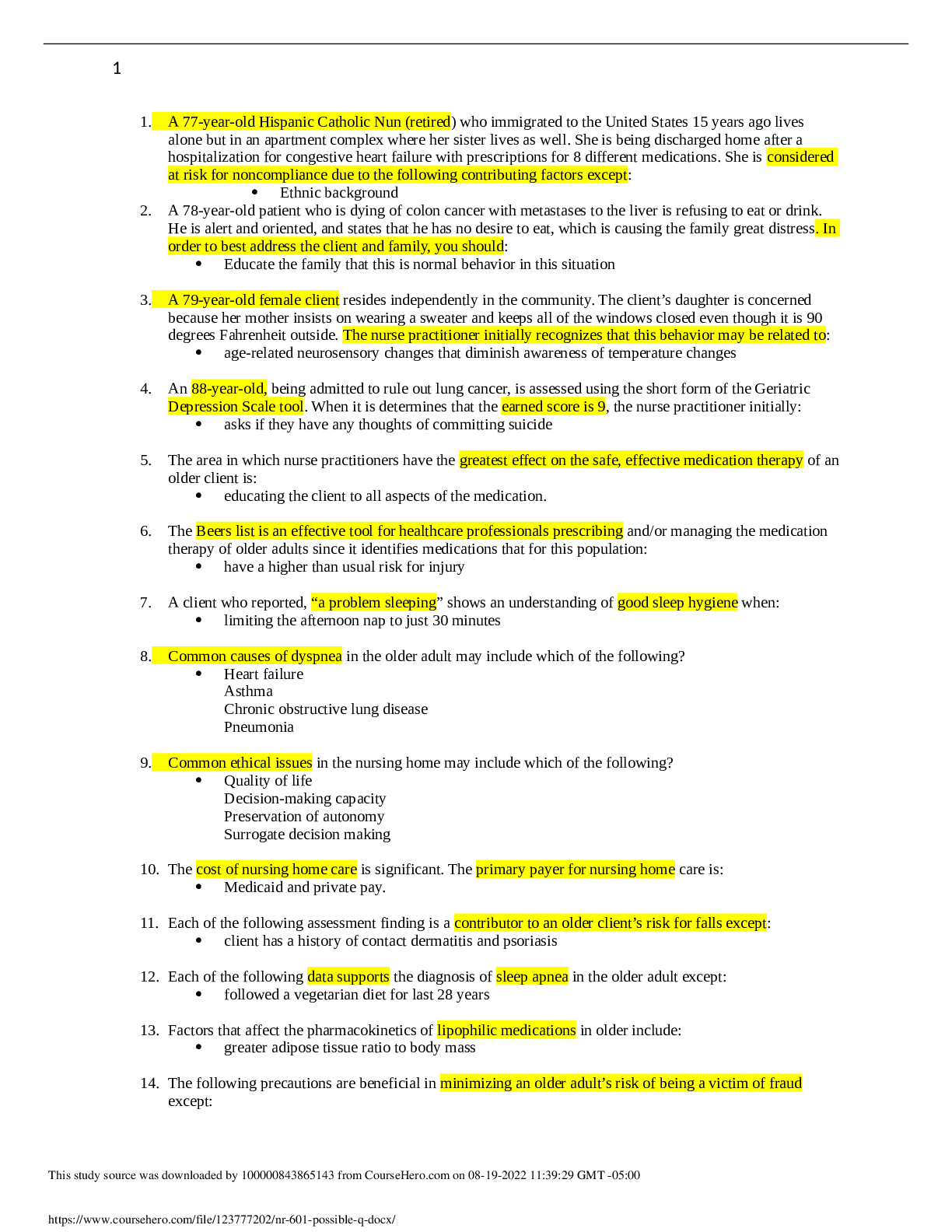
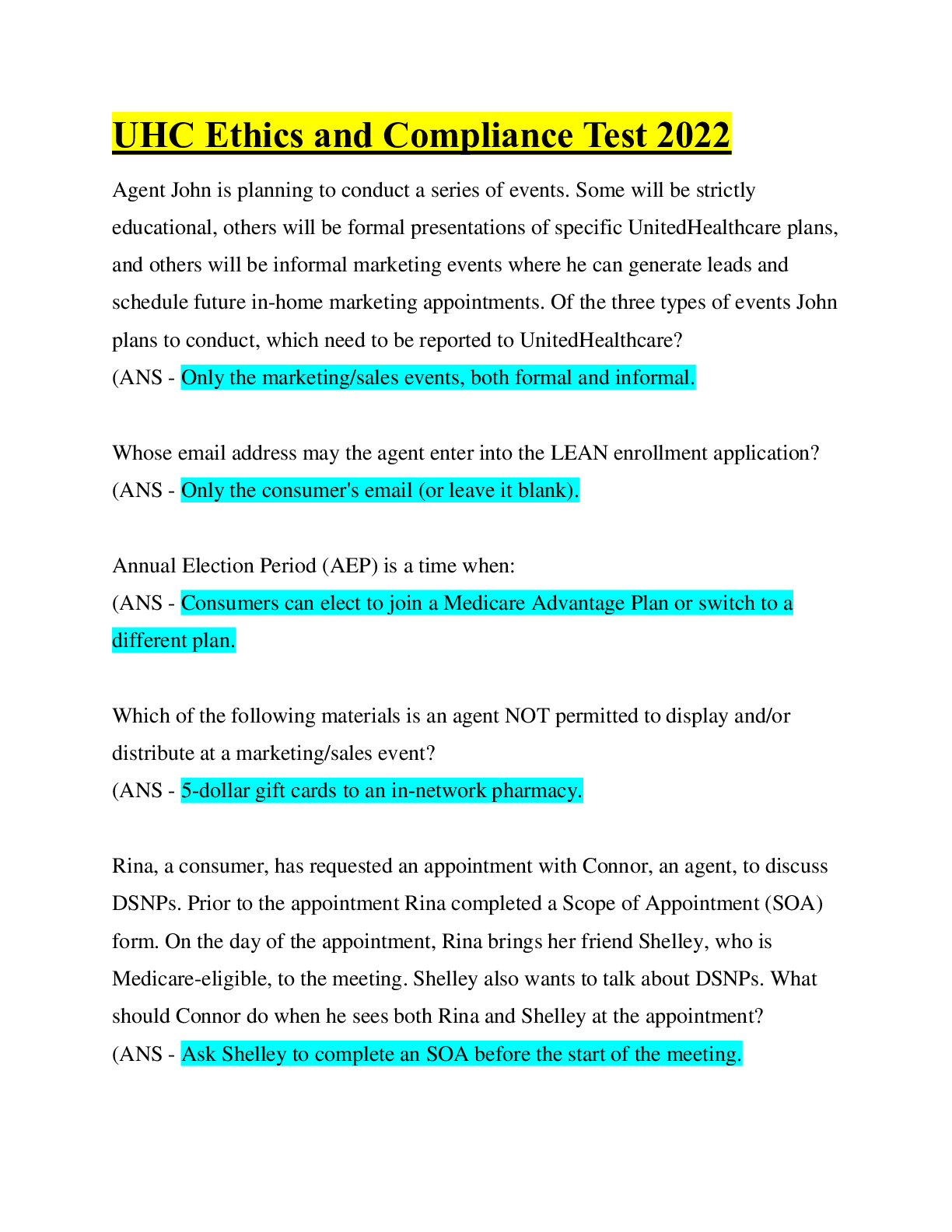

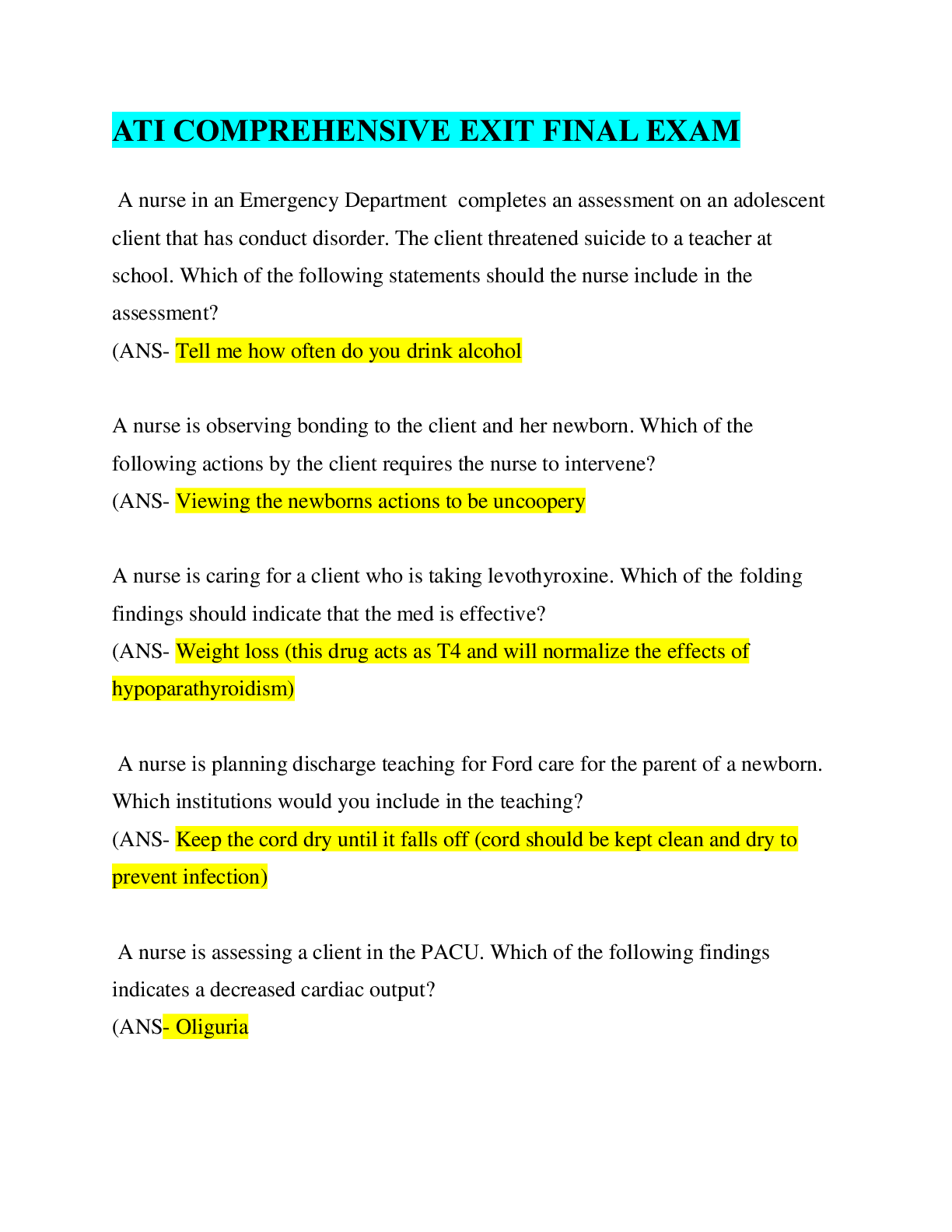
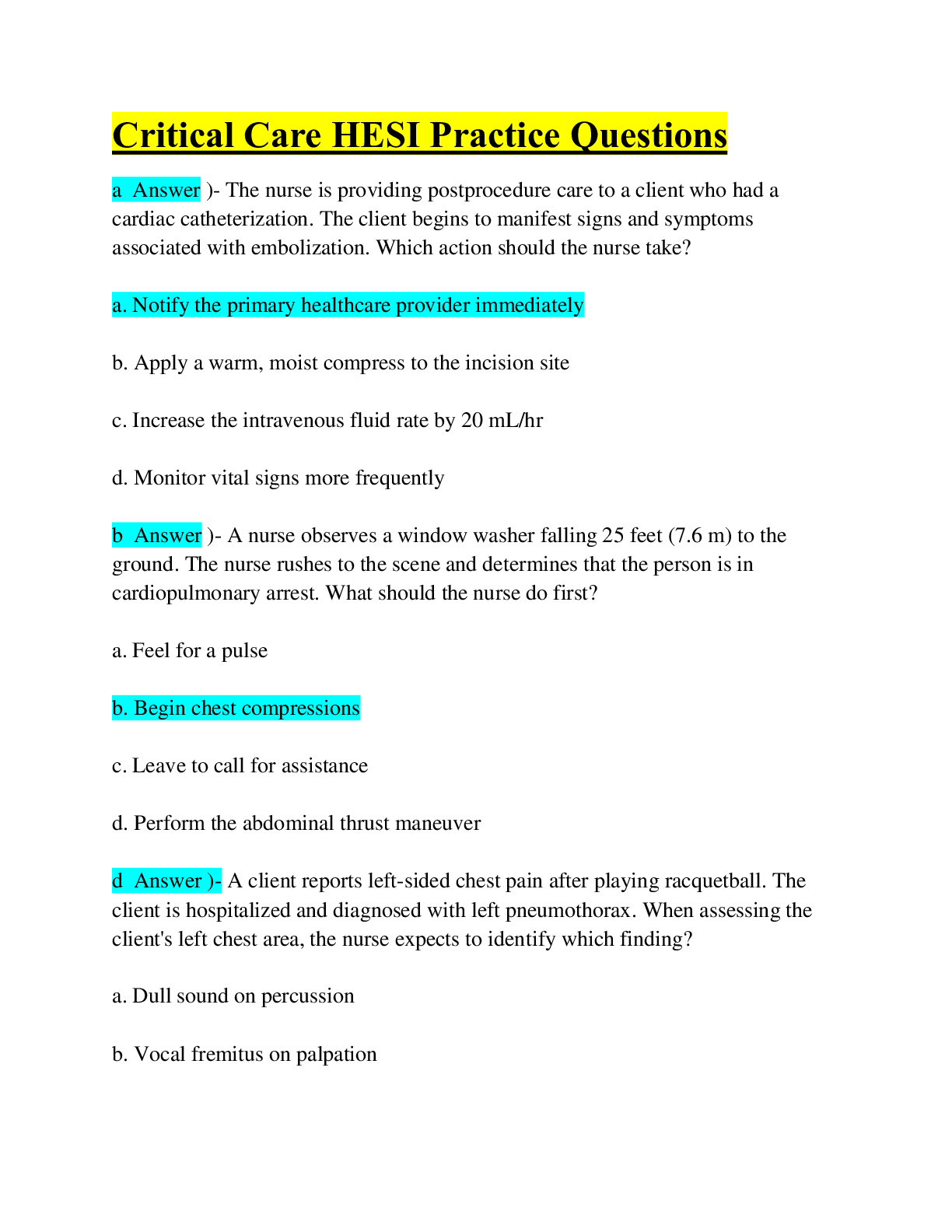


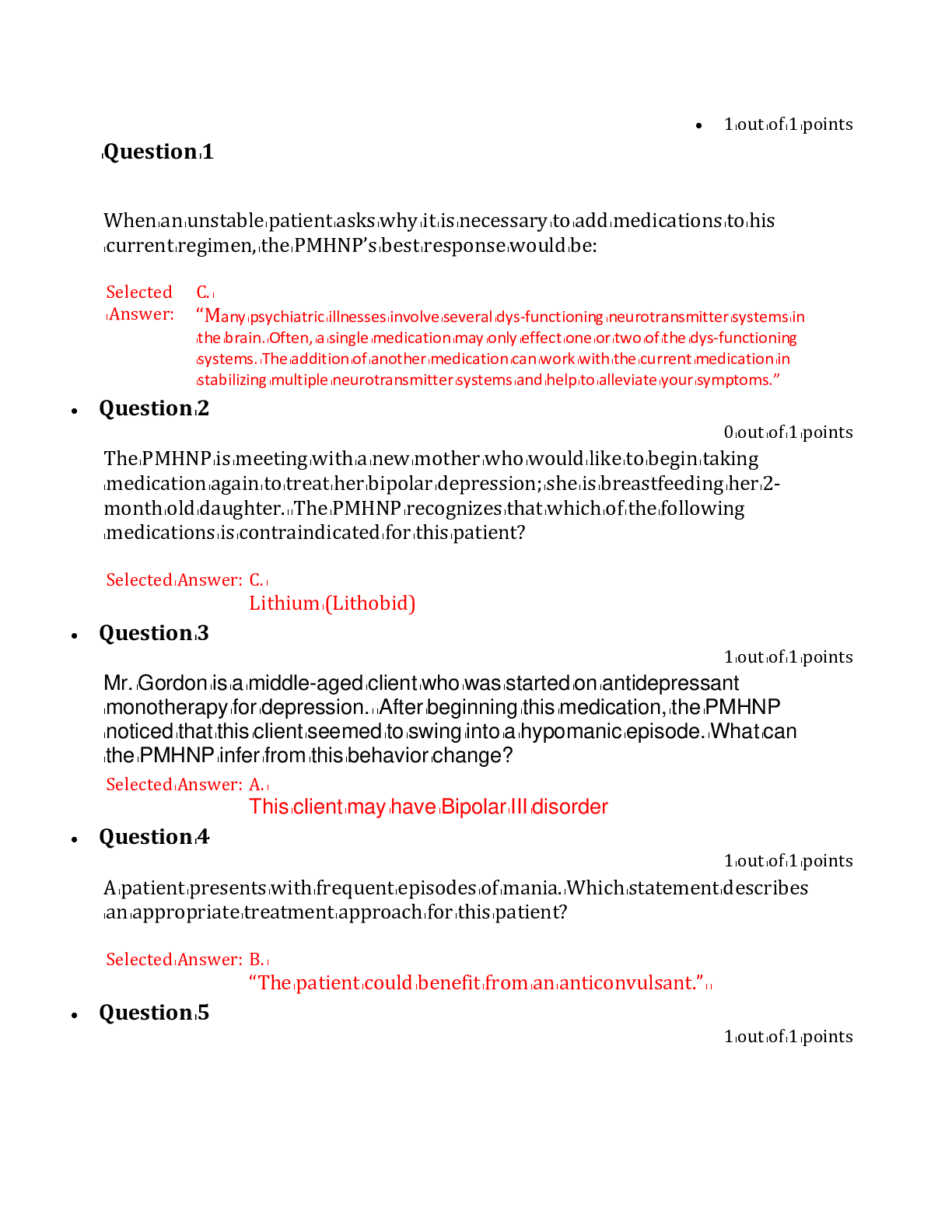



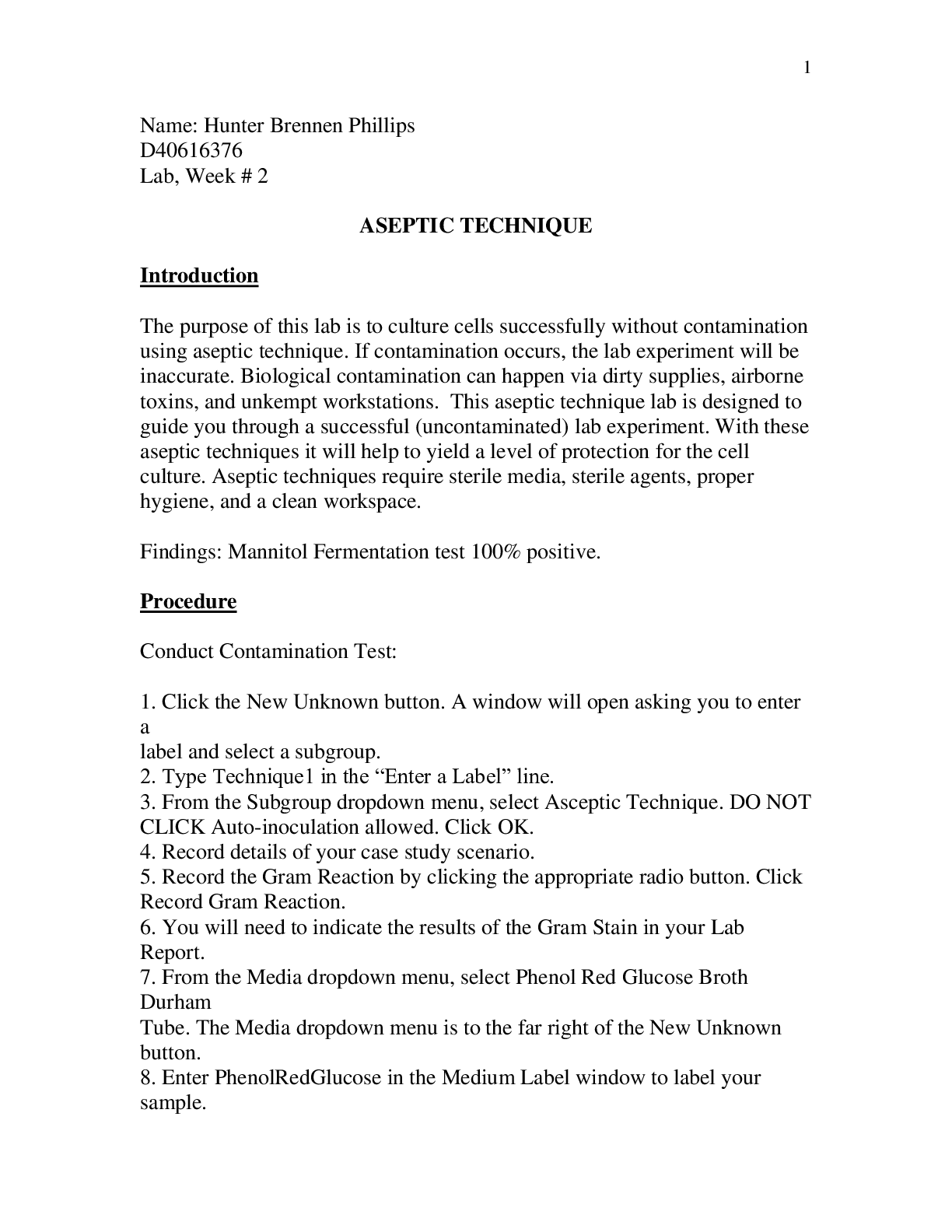
.png)
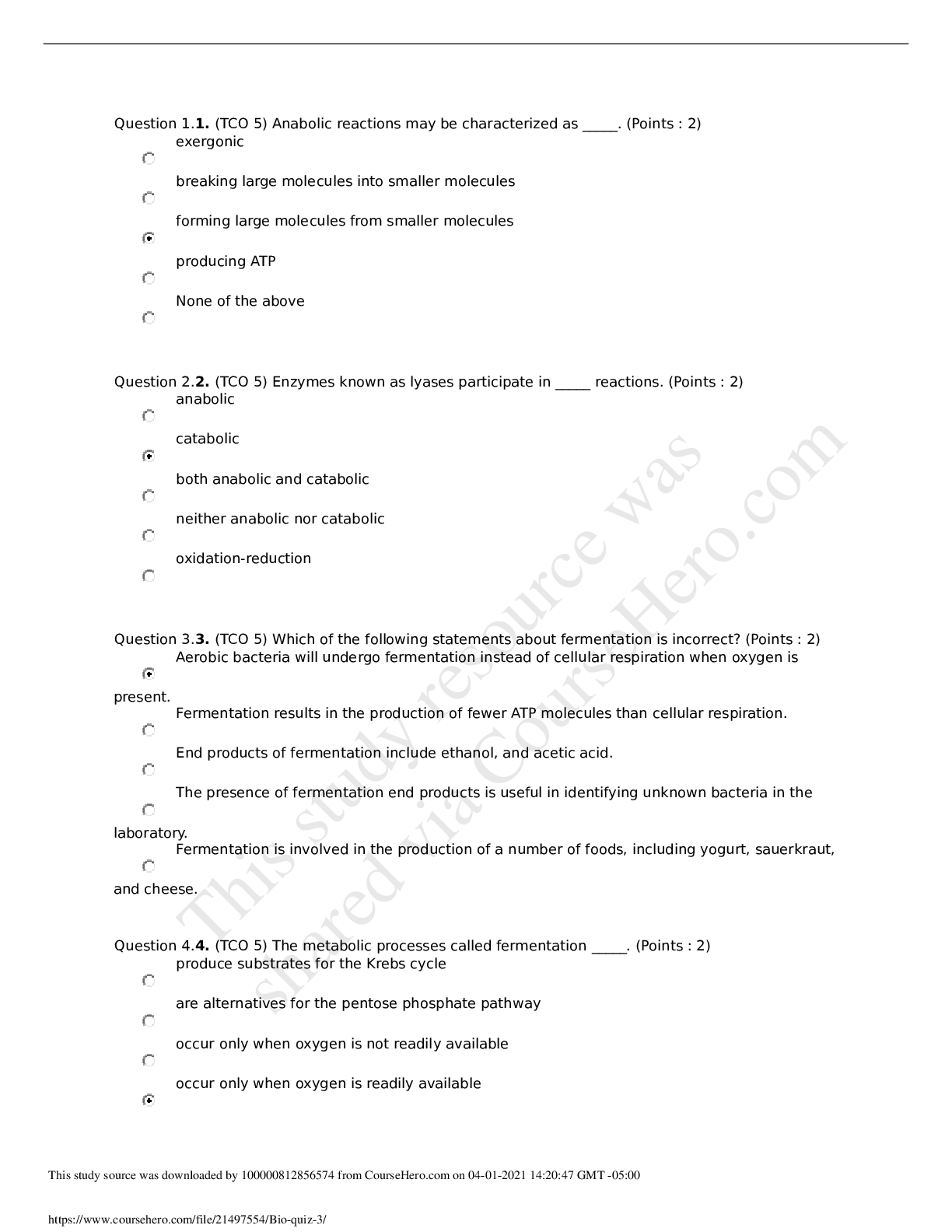
.png)

